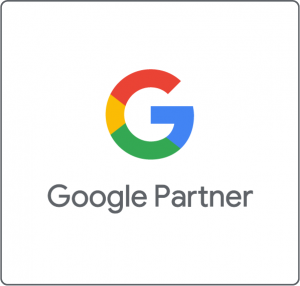Creating Personalized Customer Experiences with Advertising Automation
“Give consumers a thoughtful, tailored advertising experience and they will buy more, become more loyal, and share their positive engagement with others.” In theory, a simple concept, yet it’s one that is extremely difficult to execute.
Delivering a great customer experience depends on a range of factors, including speed, convenience, consistency, and approachability. The big one, though, is the human touch: creating real connections by making technology feel more human and meeting people in the moment, where they are and on an individual level.
The Rising Demand for Personalization
The rising demand for personalization is not solely aimed at big brands—consumers have come to expect it from businesses of all sizes. A 2020 Salesforce study found that 66% of all buyers (including both B2B and B2C) expect companies to understand their unique needs and expectations, 52% expect offers to always be personalized, and 76% expect consistent interactions across departments.
Together, these numbers make it clear that all brands executing a digital-first or direct-to-consumer strategy must move beyond a blanket targeting approach and, instead, create content that caters to their audience’s unique experiences and meets them on their preferred channel—be that Facebook, Instagram, TikTok, Amazon, Hulu, Spotify, Pandora, or elsewhere.
Right now, many brands are still leveraging production teams or agencies to manually build creative variations, which (when done manually) can be incredibly cost sapping. This model was once the only one available, but it’s inadequate for an era where marketers need the ability to easily modify and customize creative assets with audience-specific language, calls-to-action, visuals, and products. Further exacerbating these challenges is consumers’ recent reevaluation of businesses’ roles in society, with stakeholder capitalism becoming an increasingly major factor in purchasing decisions. Modern consumers want more than just personalized experiences—they want empathetic and authentic ones, with 53% saying they feel an emotional connection to the brands they buy from the most.
In essence, there is now so much nuance to personalization strategies that in order to achieve the greater flexibility, efficiency, and scalability they require, advertisers will need more power, agility, and time. Fortunately, there is one existing solution that affords media buyers all these benefits: automation.
Recent technological developments in the areas of artificial intelligence and machine learning have enabled advertisers to create more personalized content while leaving antiquated manual techniques behind. Dynamic Creative Optimization (DCO) systems activated by Customer Data Platform (CDP) infrastructure can automatically build thousands of digital ads that vary in real-time for product-based retargeting, creative personalization, audience segmentation, and customer journey enhancement. By adopting workflow automation, media buyers have more time to focus on these types of strategies and ensure they are crafting messaging that better targets unique segments. The end results: more conversions, loyalty, and revenue.
The Current State of Personalization: Six Stats
- 84% of consumers say being treated like a person, not a number, is very important to winning their business.
- 70% of consumers say that a company understanding how they use products and services is very important to winning their business.
- When customers receive transparent ads based on their activity on a site, the revenue of the product grows by 38%.
- 80% of companies report seeing an uplift since implementing personalization.
- Marketers report that personalization efforts can boost revenues by up to 15%.
- 71% of consumers feel frustrated when a shopping experience is impersonal.
Automated Personalization in Action: Eight Examples
Geo-targeting campaigns
- Vertical: Retail & E-commerce
- Target Audience: New prospect – Top of the funnel
- Advertising Automation in Action: Weather forecast predicts rain in prospect’s zip code > Trigger ads for coats and waterproof clothing
Feed-based product campaigns
- Vertical: Travel & Tourism
- Target Audience: Rewards member – Bottom of the funnel
- Advertising Automation in Action: Books a flight to a previously visited destination > Triggers ads for their favorite hotel
Sequential storytelling
- Vertical: Retail & E-commerce.
- Target audience: High-value customer – Bottom of the funnel
- Advertising Automation in Action: Repeat tote bag purchaser > Trigger ads showcasing next season’s line
Behavioral prospecting
- Vertical: Education
- Target Audience: Recurring customer – Bottom of the funnel
- Advertising Automation in Action: Recently completed a beginner’s course in learning Spanish > Trigger ads for an intermediate course
Geo-targeting campaigns
- Vertical: Automotive
- Target Audience: New prospect – Top of the funnel
- Advertising Automation in Action: Browsing for used cars > Trigger ads directing prospect to closest showroom near them
Contextual targeting
- Vertical: B2B
- Target Audience: Disengaged prospect – Top of the funnel
- Advertising Automation in Action: Visiting website for the first time in nine months > Trigger “Welcome back” website content
Sequential storytelling
- Vertical: CPG
- Target Audience: Recurring customer – Bottom of the funnel
- Advertising Automation in Action: Purchases a bottle of wine > Trigger ads with suggested food pairings
Behavioral prospecting
- Vertical: Automotive
- Target Audience: New prospect – Top of the funnel
- Advertising Automation in Action: Researching family cars > Trigger ads for SUVs that highlight their safety accolades
Wrapping Up—Creating Personalized Customer Experiences
The very meaning of the term personalization has evolved quite a bit over the last decade. Indeed, until relatively recently, the concept of personalizing content equated to simply inserting someone’s first name in an email or basic push notification.
However, personalization today is a different animal—much more complex, much more challenging, and much more pervasive. To get it right, and at scale, advertisers need to first get their data house in full order before layering on top various automation functionalities that can empower them to go from rigid linear storytelling to something markedly more dynamic and engaging.
Want to learn more about advertising automation?
Check out our guide and see why automation is essential to the future success and long-term growth of the media buying industry.



